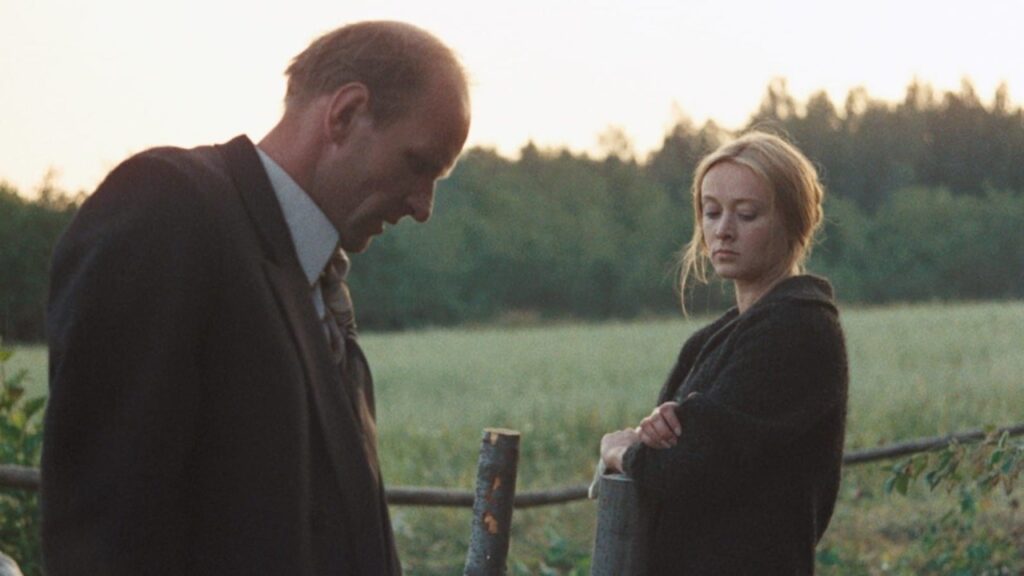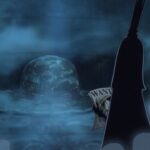‘Mirror‘ by Andrei Tarkovsky is a film that challenges conventional narrative, presenting life through a sequence of recollections, dreams, and historical fragments. The story revolves around the life of Maria, the mother of the filmmaker’s surrogate character, Aleksei. However, her presence is filtered through the memories and perceptions of her son at different ages.
The film does not move linearly, as we see events from childhood, adulthood, and historical moments coexisting, as well as emphasizing how personal and collective histories shape human experience. Memory functions as both witness and record, revealing the inseparability of private life from social and historical context.
Visual Language of Time, Memory, and Personal History in Mirror

The opening scene immediately establishes this approach by showing fields, houses, and domestic interiors alongside Aleksei’s reflections on childhood, creating the sense that past and present are simultaneous. Images of his mother in varying stages of life appear alongside the boy Aleksei and the adult voiceover, presenting identity as a layered and shifting phenomenon. The intercutting of domestic scenes with natural landscapes signals that the personal and the external world cannot be separated. Time in the film is not sequential, because it mindfully follows associations of thought, emotion, and observation rather than cause and effect.
Just like any other films ever made by Tarkovsky, his visual style underscores these thematic concerns. Long takes and carefully composed shots allow events to unfold in real time, with minimal editing to interrupt the continuity of perception. Water, fire, and mirrors recur throughout the film, serving as markers of observation and the passage of time. Reflections and transparent surfaces suggest that identity and memory are not fixed, and they change according to perspective. The filmmaker frames both interior and exterior spaces in ways that emphasize human vulnerability against environmental and historical forces, showing how small gestures and moments are inseparable from broader social conditions.
Historical fragments are integrated into the film without commentary or explanation. Especially the newsreel footage and references to wartime experiences coexist with personal recollections of family life, showing how external events leave traces in memory. Maria’s life, constrained by social and political forces, is inseparable from twentieth-century Russian history, and the impact of these forces is visible in her behavior, her children’s recollections, as well as her interactions with others. The film does not simplify these experiences into moral lessons, as it presents them with realities that shape human choices and perceptions, often leaving them unresolved.
Andrei Tarkovsky Explores Consciousness and Memory Shape Identity Across Shifting Moments

Dreamlike sequences blur the boundary between conscious thought and memory. The child Aleksei’s experiences, Maria’s reflections, and surreal images of fire, snow, or rivers interact to create complex temporal layers. One sequence shows Maria walking across a frozen river, with landscapes shifting around her, suggesting the passage of life and the persistence of memory. Another depicts objects burning while family members stand still, emphasizing both transience and permanence. These images show that memory does not reproduce events accurately but transforms them according to emotion, observation, and the influence of past trauma.
The absence of a conventional plot or resolution reinforces the film’s perspective on time and experience. Events do not resolve in closure or moral clarity; rather, they emphasize endurance, observation, and continuity of consciousness. Viewers are asked to follow the experience as it unfolds, noting repetition, overlap, and variation in perception. By doing so, the film presents life as a series of observations, where moments of clarity coexist with uncertainty and incompleteness. Time is layered and associative, memory is selective, and identity is layered and contingent.
The final sequences unify these elements without providing resolution. The mother and son appear in overlapping images, showing the simultaneity of experience and memory. Aleksei no longer reacts with awe to the images of his mother or his childhood; he perceives them as part of a continuum. The film ends on the observation of life as it exists, without commentary or closure, emphasizing the persistence of human consciousness even after events have passed. Mirror portrays human experience as constructed through memory and observation, shaped by historical and personal forces, and constantly subject to reinterpretation.




